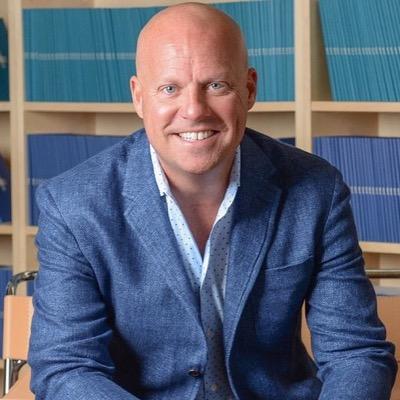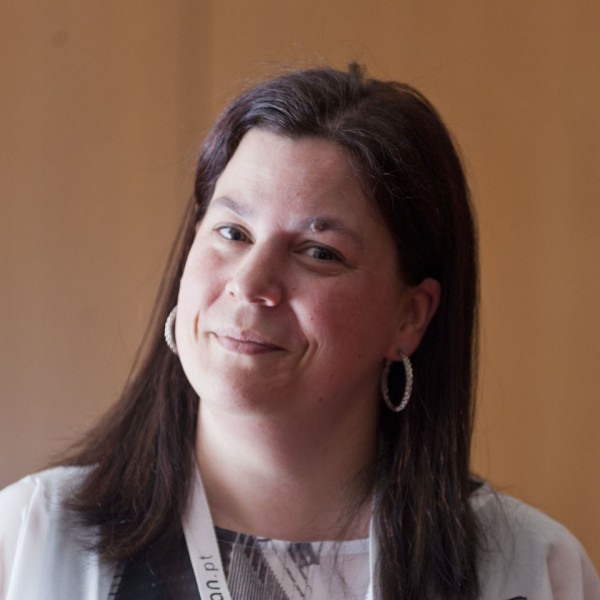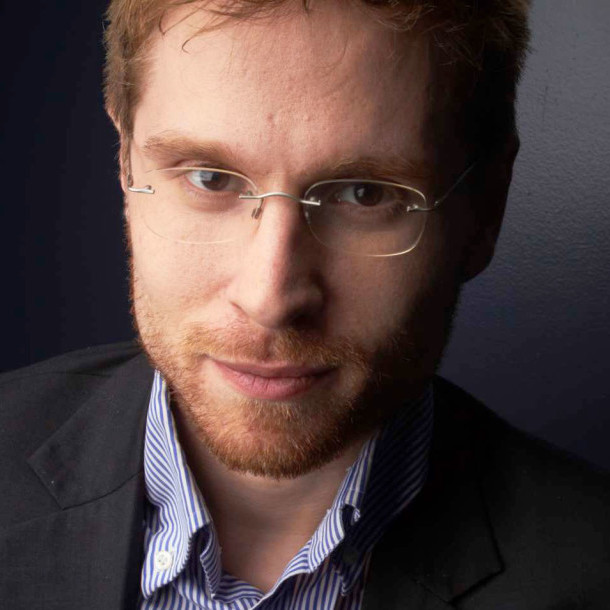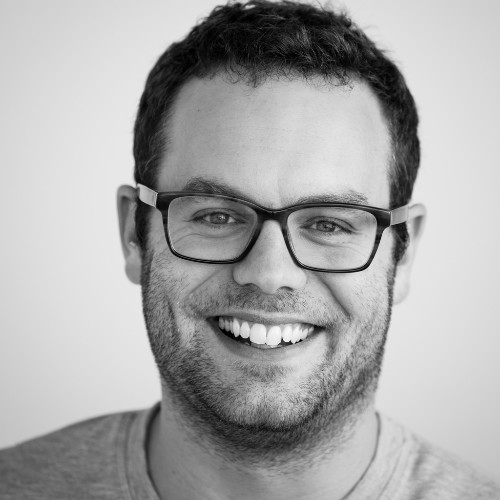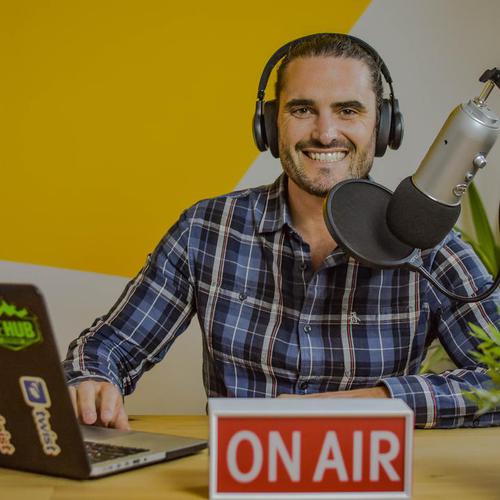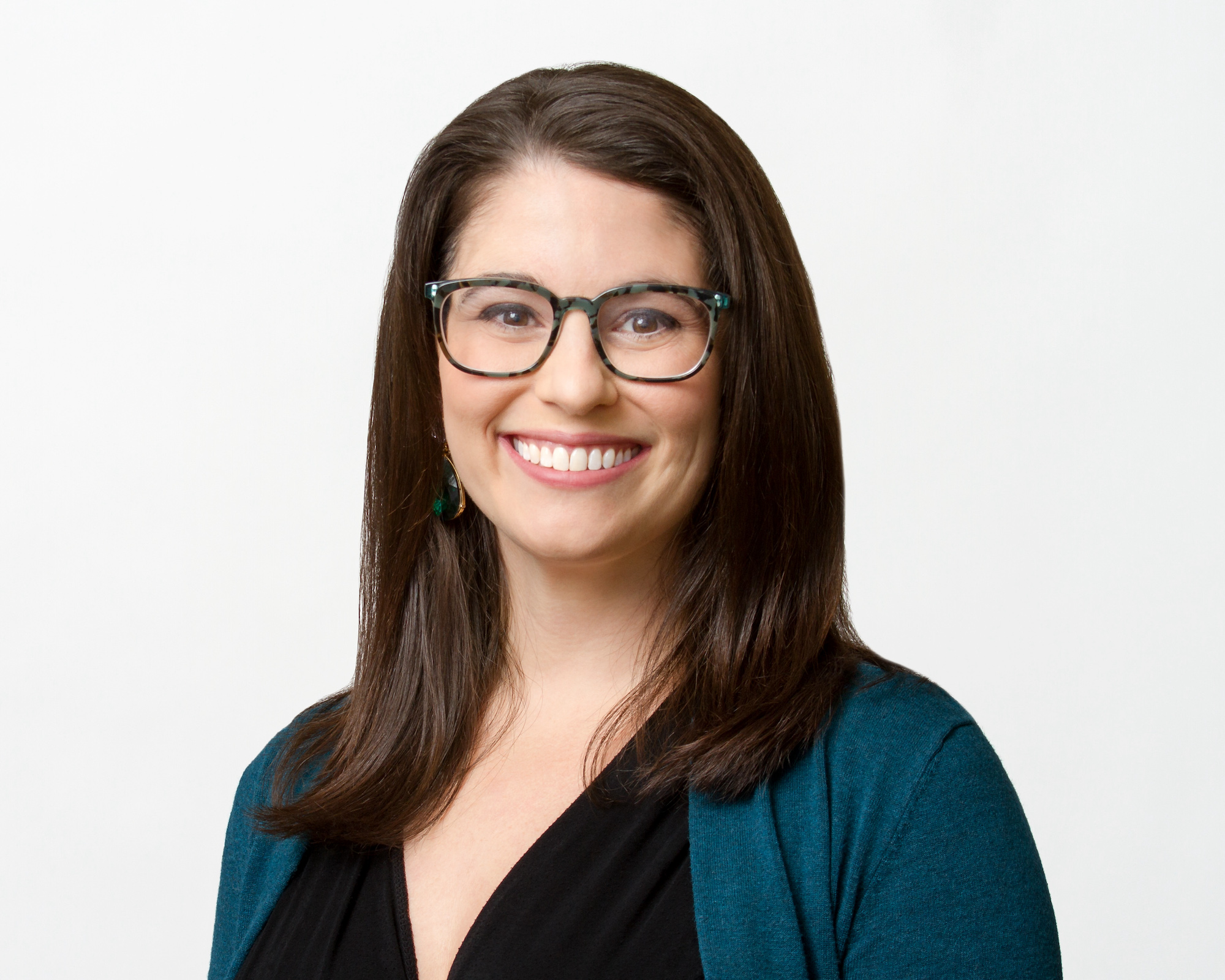What are we talking about?
Embracing the new possibilities that a digital workplace offers
Why is embracing new possibilities important for the future of work?
Just shifting from physical to digital doesn’t help us reach the future. We have to be aware of what’s new and what is coming next.
What did Bryan Brenner teach us about embracing new possibilities?
Bryan Brenner leads First Person Advisors, which helps companies create and execute and overall people strategy.
Bryan has seen lots of companies undergo a digital transformation, and has learned a lot of lessons from it. Change management is hard, no matter the situation. But forced change management in the midst of a pandemic is even tougher. Even though everything might look good from your viewpoint, some people might be deeply struggling.
First Person made the complete shift to remote work along with the rest of the world in March of 2020. However, they weren’t entirely caught off guard. “It’s like we were slowly preparing for something we didn’t know was coming,” said Bryan.
Their communication and collaboration had already moved online, starting with Microsoft Teams and then moving to Slack.
One of the best outcomes of the switch was allowing people to work where AND when they wanted to. Bryan has never been a micromanager, but this shift has allowed everyone the freedom to focus on their outcomes.
The same isn’t true for all of First Person’s clients. Some of them have embraced the new possibilities, but others are trying to hold tight and take back as much control as possible. Bryan thinks that’s the wrong path, and companies need to accept the digital wave and find ways to ride it.
Time is a big difference in a digital workplace. Bryan says time is more valuable than it was before. They don’t waste time with big, heavy meetings, and want to get the most out of the few in-person client visits they are making.
First Person has also created ‘Universal focus time’. These are two black-out periods during the week when there can be no requests for any internal meetings.
Next up for realizing the possibilities of digital is getting out of static workflows and doing more integrations with Salesforce and Slack.
More from Bryan Brenner
Today, our guest is Bryan Brenner. He’s the CEO at First Person. We’re excited to talk to you today. Hi, Bryan.
Hey, Neil. How are you? Good morning.
I’m doing great. It’s exciting. It’s a new day. We’re fully into this world of post pandemic, not a post pandemic. We’re still in the middle of everything, but learn how to make things work. Why don’t you tell us a little bit about what First Person is and your journey in building that?
Yeah, thanks for asking. I started the company 22 years ago ish. And we have developed from a benefits firm to a talent firm that’s focused on overall people strategy. How do we help leaders optimize the people side of the business to really drive the outcomes they’re looking for. So lots and lots of things, of course, fall into that. And while we’re not perfect experts in every spot, we’re pretty good thought partners on how to pull all that together. It’s a lot of fun working with employers and leaders, and we love what we do.
Tell us about the early days of your company. What was it like in terms of what were the things you focused on? How did you start everything?
That’s an interesting question. First of all, we started with three people in one office jammed together. I don’t wish for those days again, but there are some special memories. My assistant tells a good story about me literally looking over her shoulder as she did work, just how we were positioned.
There was no other option.
That’s right. Boy, we come a long way to this work from home situation now. But our early focus was really taking benefits to employers and then ultimately to the employees in a different way. In the employer business, one of the risks we have is that we see the employer as our customer and that’s definitely true. They’re the buyer. But that can create a little bit too much of a gatekeeper situation if we’re not careful to help the employer and ourselves remember that the end user is the people. It’s the everyday people that are trying to get the work done to help the company succeed. So we’ve focused a ton on remembering that in our work and planning and then also focusing on communication strategies. How do we help employees begin to deal with at that time, a myriad of changes happening in an employer healthcare, and options like flexible spending accounts. Now, of course, that’s proliferated into HSA, so many things that come at people.
And just for context, what year did you start in?
1997, way back last century. It’s all good.
So, let’s walk forward. Talk about especially in your own company right now, we’ll just stay there, in terms of we talked about digital workplaces and where you are now in terms of building that. How would you compare where you’re at in 2020 with where you were at in ’97? And what are some of the key moments in that journey?
I think when you think about the changes we’ve experienced over these 22 years, I’m really pleasantly surprised at how well we’ve transitioned to this work from home model. And I think it’s because we, like some of our customers and peers, had worked really hard to create structures that allow for it because we knew it was important, but if we’re honest, we really still had a mindset of work from office and work from home was the other option. The other thing that sometimes people did. And when we flipped, what I realized was we spent a lot of time on flexible workspace. So everybody has already had a laptop, everybody was already able to work from wherever. We already had all the right technologies and switches built. We have an open workspace so people were used to moving around or many of our people were used to moving around. We had a lot of the right software systems that allow us to connect in on the work from anywhere. The two things that we did have to shift immediately were we moved from teams to Zoom, which was a market improvement. And we moved from teams to Slack for collaborative. And those two moves happened literally within days, and people adjusted very quickly. So I guess all that to say, multiple things we’ve done over the last five or six years just paid off overnight.
It’s like you’re slowly preparing for this thing you didn’t realize you were preparing for.
Exactly. I liken it to a similar setting of hospital setting. I spoke with a hospital CEO throughout this COVID situation just to get feedback and perspective. And he said that in March, the hospital system, a large system, about 16,000 employees, they had as many primary care visits in March, as they had in November and December. And yet 70% of them were virtual in March. So it’s like the bandaids have been ripped off this thing. It’s like no more is it a maybe thing. I overnight became the thing. And I think we probably in some ways needed that kick. Not that we would’ve want it this way, but it has had that benefit.
If you don’t mind, go into a little bit more detail about your switch from teams to Zoom and Slack. What were some of the reasons why you were looking for a new solution? And why did you find these to be better?
Well, teams, a lot of it was user experience. It just isn’t as pleasant on the screen, just little things like the picture of yourself is down towards the bottom. And yet you should be looking up towards the camera, and that’s distracting. It’s funny how little things like that start to affect. You couldn’t see as many people on the screen. It just didn’t seem as high quality. It was clunky. We had always struggled with Teams from a collaboration perspective, because there were so many channels. It just was not, again, organized in a way that really people wanted to adopt. And then we moved to Slack and it’s like this immediate adoption, people love it. Our Twitter feeds coming up in there automatically. There’s just all this integration that really has made it, a great place to work, a place to be. I think a lot of it is user experience.
Speaking to yourself back as someone who started the company in ’97, what would be the most surprising thing for you looking at where you’re at in 2020 right now?
I’m mid 40s. I started with my business young, but I’m no longer one of the young people in the workplace. And I think the thing I’m most surprised about is some of the biases that I have that are just natural based upon how I grew up in business. And I’m really pleased to say that’s changing, because I see younger folks coming in new ways of working and I love it. So for instance, I still have friends who are employers who really feel like they have to see people to know that they’re working and working effectively. And I just don’t have that perspective at all. I think, well, that’s just silly, because think about all the different things I do every day that are really meaningful to the business, but no one would actually be able to see them in the traditional sense. And yet, I know that’s really valuable. And that’s what I’m doing. So I think the idea of having to be able to see people or have people work certain hours of the day or in specific ways, what I’ve seen shift really positively is what successful employers are doing, I think is creating platforms whereby people can work the way they want when they want. But yet, we’re all in a similar space. So Slack is a good example. So I would say that’s probably one of the biggest changes that I’ve seen over time that’s positive.
You have a unique experience here because you have so many clients that are also dealing with the same issues and going through things. So what’s that experience been like for you? Where have you tried to push some of your clients? Where have you learned from them? What are some of your experiences in these last few months?
The clients I’m most inspired by are those who have, I would say, a sense of generosity and a sense of belief in what’s possible, versus a worry about trying to control things. And what I mean is not that we wake up in the morning carefree with not a thought. But rather than focusing on, especially through this transformation, like trying to control things in the traditional way, I feel like the best examples would, I just gave up on all that, just like that’s not going to work, we got to move to some different things and ways of thinking and beginning to believe in what might be possible. Like, actually there could be some really good things come out of this. Our sales pipeline has been stronger than ever. The way we’re helping our clients are so fluid and so effective and team oriented collaborative. It’s like I could have not created that if I wished for it, but yet, it’s here. And so I think that sense of believing in what’s possible, and we still have all the same challenges everybody has. It’s difficult to only talk over Zoom. It’s hard, some of these things are not pleasant. I don’t prefer them. And yet, there’s this great sense of possibility as to what we can create moving forward. And we’re doing it.
When it comes to what’s possible, what’s next for you guys? When you think about where you’re going to move your digital workplace to, what are some of the ideas you have that you’re experimenting with right now?
Great question, Neil. We do a lot of employer in person meetings, and I think what we’re realizing is those are super valuable and should be taken advantage of very specifically, we should be very prepared and super thoughtful about those times together, because we now see how valuable they are. However, there’s also a ton of value to what I call interim touches, punctuated moments when we can really help somebody push through a decision or a thought process and I think the more we do that in a punctuated way along the way versus these big chunks of these heavy meetings with big decisions to be made, I think that fits decision making better, and I think it’s more pleasant, and I think it’s actually a ton more effective to help people shift their mindset over time to where they’re trying to go. I see a ton more interaction in that way.
I think that that’s a really valuable insight. I’m seeing that with other companies, too, that it’s almost like we’re realizing how valuable that in person time is. And you don’t want to waste that.
We took it for granted if you look back, like, oh, golly, it was so easy. I will say another thing I’m super excited about just this week or last week, our team or leaders announced that we would be going to universal focus time. And we have two times in the week, 1 o’clock to 3 o’clock on Tuesdays and Thursdays, where meetings cannot be set. And now certainly I can do whatever I want. During that time. I can call a client, I can follow up, I can do all those sorts of things, but no internal meetings, no requests for that, no request for a customer meeting that pull people in. And I got it tell you, I had the first one yesterday. It was remarkable. My day was so much better. I felt so much better at the end of the day because one of the challenges of this is, it’s easy to just do back to back to back to back. And that’s not natural for humans. We can’t do it. Our brain cannot do it. We become exhausted. So I’m super excited about some of those ideas and just trying things that maybe give us all a lot more flexibility. And I think it’ll increase happiness as well.
Absolutely. I like that, universal focus time. It’s great. Well, let’s talk more about collaboration strategy. You talked about how that’s something you were working on even with your clients as you’re doing things. How do you feel like as we enter into this new age of digital workspaces and everything that’s going on, what are some other collaboration strategies that you would want to recommend to other clients and other people with the same end and what are some things you’re working on and struggling with?
One thing we’re working on really significantly, we just made a switch to a new outsourced IT managed services partner. It’s been fantastic. And we also switched to a new Salesforce partner. We’re heavy Salesforce users. We’ve been told by Salesforce people, it’s like, wow, for a business your size, you really are heavy users. However, we’ve often built things ourselves and fairly static screens and fields within Salesforce, as opposed to integrating additional apps and technologies. And I think what will happen is, we are going to get out of some of the very linear workflows like this happens then this like conveyor belt stuff, and much more into collaborative settings, pulling Slack and different things into that so that it’s more natural for how people’s brains work, and how ideas come to life. And so I’m looking forward to that balance. We’ll see where that goes. But I’m excited about the things the team is asking, how they’re engaging with our new partners, and I see a lot of hope with that.
Talk to us a little bit about leadership when it comes to a digital workplace. What are some things you’ve noticed that changed? You talked about some other colleagues who feel like they need to check in with different people. What do you feel like is the leaders role as we move into more of a digital workspace? How can we still provide coaching and mentorship without being so much of a micromanager?
Great question. I’ve thought a lot about this and tried some new things and seeing success with a different mindset. I think it starts with focused mindset on thinking, how can I help get to people intentionally, to help them make sure they get what they need and that they have the resources they need? How are they doing emotionally, feeling fatigued? What are some different ways of working? And really having those kind of conversations versus how’s this project going? What have you gotten done lately? Certainly those things naturally flow and I think once people feel like you’re there to do something for them versus get something from them. So, I think it’s being very intentional. I think it’s being very other people focused and centric, and it’s finding little ways to add something to their daily life that makes a difference. Might be a tool, might be a check in, might just be a way of saying something intentionally.
It’s almost like the role of the human manager is less about getting the project done, getting the task done, and really checking in on people. And you really have to become a student of humanity and understand what makes them motivated. How do they express anger? How do they express all these things and learn that stuff? That’s really important.
I think that’s interesting. You jogged my memory on something I just learned in one of my Masters classes, and that was, we’ve moved certainly from the industrial age. And I’ve been part of that moving to the information age, and I always thought, gosh, industrial thinking, so old school and whatnot. But really, now what’s happened is we’ve moved into what’s called the participatory stage of how we think and work. I’m feeling like what’s happening is, there’s this new thing happening where people want to participate in new ways. They want to be much more active. They don’t need as much control, but they need input and feedback. I’m excited to learn more about that. It also reminded me of along this digital topic, old school versus the new wave, how professors still assign a number of pages in order to feel like you’re doing your work. I feel like they should become more modern and allow me to do a one page bullet. It’s much more effective and memorable. So I can’t get them there yet.
Yeah, that’s good. Well, as we go to the end of this, I just want to ask one question about culture. It’s often a big thing on people’s mind. When you’re in a remote setting, when you’re in a digital setting, it feels like it’s harder to do culture, make people have a sense of belonging, being inclusive to others that are around you. What’s been your experience during this transition? Have you felt like it has been harder and what are some successes you found?
I think it is harder. I do. I think there are some new interesting ways that come about. We’ve had some fun, happy hours. We actually invited a petting zoo, got a tour and donate money to this animal rescue as part of that. It’s things you would never do otherwise. But I do think the manager’s role comes to life in a setting where it’s much more relational, much more intentional, much more human based, and less task focused and managers who are prepared for that are doing very well. Managers who weren’t, I’m sure it’s quite a struggle.
Well, Bryan, it’s been fun to just chat just real briefly about how you’ve been building into this digital workplace and been building something cool. What else can you leave with people as you can encourage them as they’re out building their own thing?
I think, in general, just I would encourage leaders to embrace a sense of possibility and belief that if you believe in people, and you encourage them to think about what’s possible, they’ll take on all kinds of things that you didn’t think was possible and they’ll solve problems while they’re at it because nobody likes problems. In fact, they don’t like to focus on them. They like to focus on the future and what could be and that really lights up the brain and gets the heart going. So I would say, being really careful every morning to wake up in that generosity, belief mode, versus fear and task.
Yeah, I love that question is what’s possible because I feel like that’s what digital offers to us. We don’t want to remove all the human aspects and all the benefits of the physical world that are there. But when you step back and you say what is possible, there’s so much that’s out there. There’s so many things that we can be doing and experimenting with and I think that’s a great theme to leave it on.
Absolutely.
Well, great. Bryan, where can people go to learn more about First Person and your work?
Firstpersonadvisors.com, follow me on Twitter, Bryan Brenner, and just grateful for this opportunity, Neil. And I wish you well with your next run here.
Thanks a lot. It’s been great to talk to you.
Thank you.
Bryan K. Brenner, CEO and Founder of FirstPerson, loves connecting with people, making an impact on his community, and seeing fresh ideas take flight. He’s built FirstPerson to advise organizations in the selection of comprehensive and cost-effective benefits – a key component in the attraction and retention of top talent in today’s competitive marketplace. Bryan’s leadership, entrepreneurial vision, and deep understanding of modern human resource needs has made FirstPerson a market leader in benefits, compensation, and employee development strategies.
